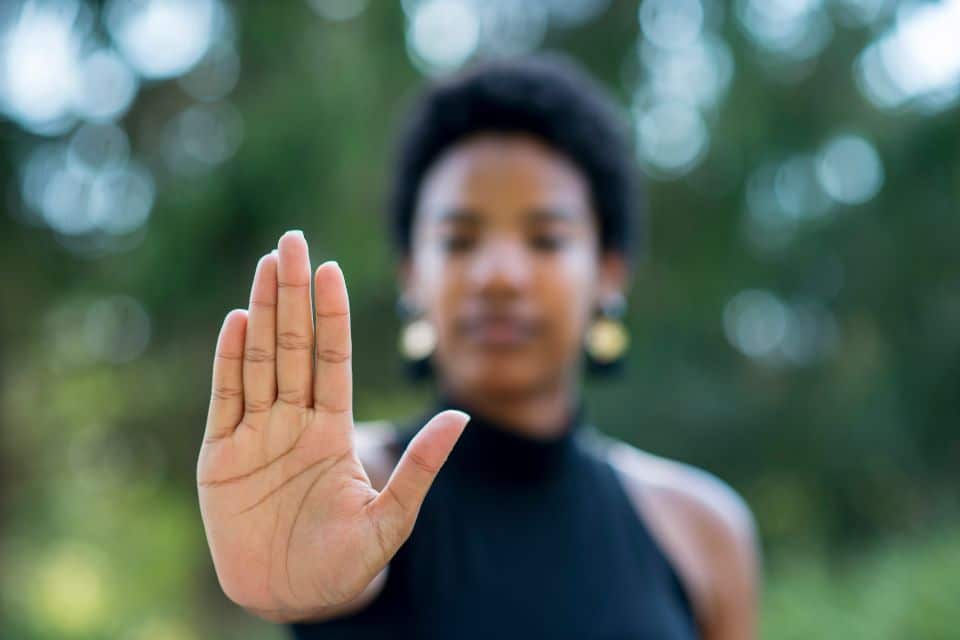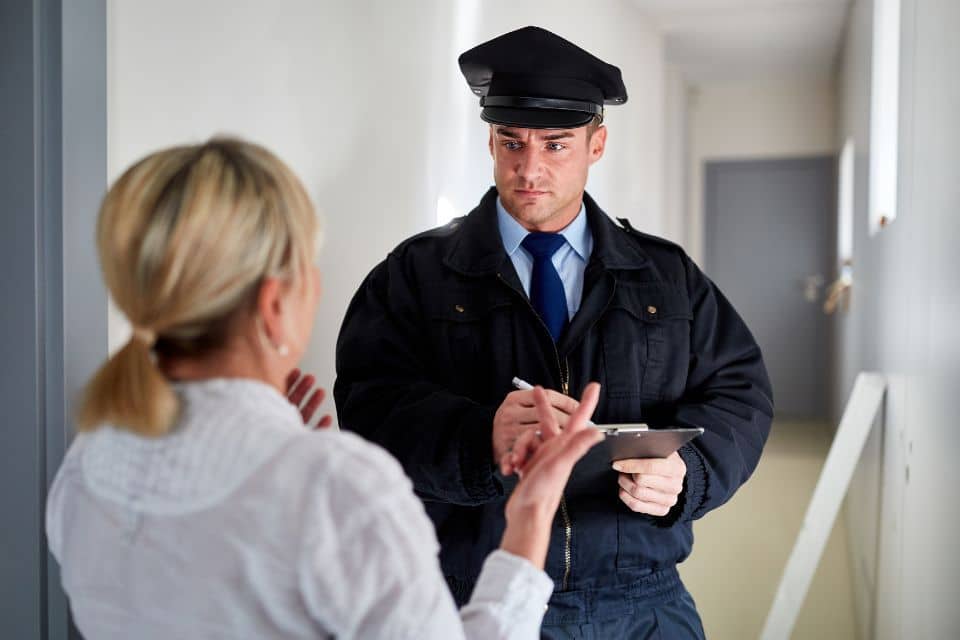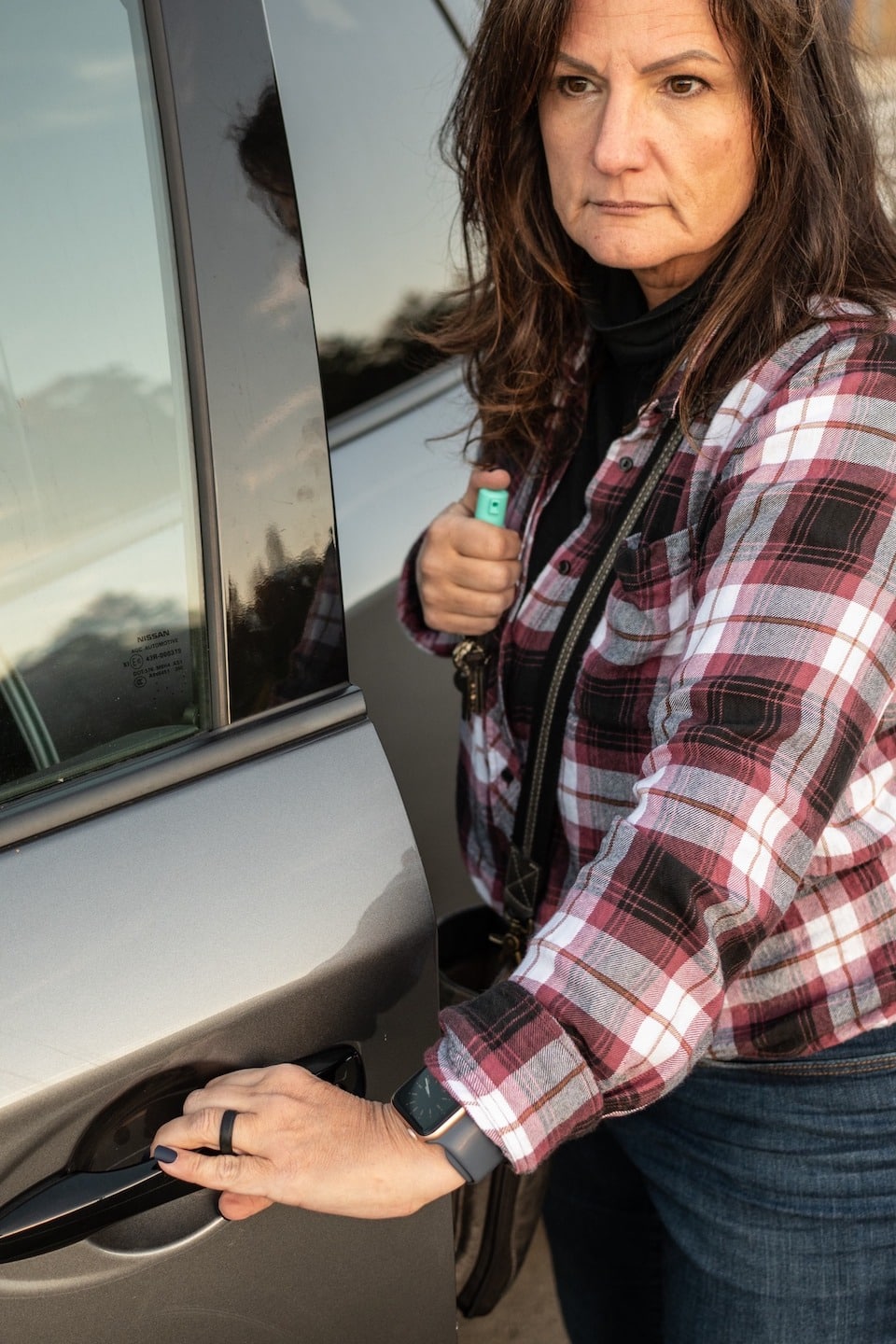Gun Tote’n Mamas is serious about women’s protection. The team behind the concealed carry purse line wants you to be safe and secure in your everyday encounters. With this in mind, we wanted to check with Duane Wolfe, and asked for his top five verbal commands every woman should know for self-defense.
Sponsored by Gun Tote’n Mamas
Effective self-defense begins and ends with communication. The primary function of any self-defense situation is the avoidance of having to physically defend yourself. However, communication becomes difficult under the stress of those types of situations.
In order for you to effectively use your communications skills, you need to practice them beforehand; otherwise your verbal commands may not be the best or most effective. When the brain goes into fight mode, so does the mouth. While words that might lash out at an aggressor may seem like a good idea, remember that those words can and will be used against you in a court of law.
Here are five verbal commands for you to practice.

1. “I’m sorry, I can’t help you.”
Like a shark initially bumping its prey prior to an attack, aggressors will often do the same thing. They are checking to see if you will make for a compliant victim. Questions such as the following might be an attempt to distract your attention away from the suspect and into fulfilling the suspect’s request:
“Can you tell me what time it is?”
“Can I borrow a cigarette?”
“Can you tell me how to get to ____?”
That distraction is the opening an attacker looks for. Keeping your head up looking directly at the suspected party, politely saying, “I’m sorry, I can’t help you,” does several things. First, it lets the attacker know you are focused on them and will be less of an easy target. It also allows you to respectfully decline a request. Criminals will often use the excuse of being disrespected or some other insult to justify their attacks on victims. By following this strategy, you negate both situations.
As you are saying it, quicken your pace around and/or away from the aggressor to create distance as you move to a safer location.

2. “Stop following me!”
If they continue to follow you or are following you without the initial “bump,” you want to let them, and anyone else in earshot, know that you see what they are doing. Again, look directly at them, perhaps even point at them as you now more loudly and assertively issue this command. If it turns out you are wrong, any normal person would stop and allow you to continue on your way. A suspect knows that you have identified him or her as a threat and will most likely go off in search of an easier victim.

3. “Stop! Don’t come any closer.”
Setting personal boundaries is critical in establishing good self-defense. The distance you set up as your personal boundary will vary depending on the situation. Being on a crowded bus or subway means that your boundaries will shrink, whereas walking in the park may expand a boundary. You must think about those situations in advance. I suggest imagining an invisible circle around yourself, then practice issuing the command when the subject that you are visualizing crosses that line. In open areas, that boundary should provide enough space for you to prepare for your physical defense should an aggressor attack.

4. “Fire! Call 911.”
All too often people are reluctant to get involved with a situation that may involve the police because it isn’t any of their personal concern. However, a fire will be of personal concern to them and may make them more likely to call 911. The police almost always arrive on scene before the fire department to a fire call so you will still get the law enforcement response that you want.

5. “I’m the victim and I will press charges.”
Once law enforcement arrives you want to quickly establish with them who you are in the situation. It isn’t uncommon for suspects to play the victim once the police arrive. Do as the police instruct you to do and consider calling an attorney if you have had to use force against your aggressor.
Of course, there are a wide variety of situations that you can find yourself in so these specific verbal commands may need to be tweaked to address the specific environment you find yourself in. Take the time to imagine different scenarios that you may find yourself in and practice the commands so you don’t have to think about what you will say.

Take the time to practice them out loud some place where you won’t be heard. Ideally you want to give the commands in a loud authoritative voice and at a pace that can be understood. Under stress, we have a tendency to talk faster, and our voices go up an octave or two. Speak three times slower than you think you need to and try and keep the pitch of your voice as low as possible. This will create an impression that you are calm and in control, something an attacker doesn’t want to see in a victim.
By having a pre-determined, recently practiced response – both verbally and physically – you have enhanced your capabilities to deal with a self defense situation.
Meet Duane Wolfe

Duane Wolfe is a nationally known law enforcement writer, trainer, researcher and speaker. His experience includes being a law enforcement trainer for more than 30 years and a martial artist with at least 40 years of training. He holds a BS in Criminal Justice and an MS in Education.
Check out Gun Toten’ Mamas full line of off-body concealed carry purses here.
Michelle Cerino, aka Princess Gunslinger, first entered the firearms industry in 2011 as co-owner, president and trainer at a national training company. She immediately began competing in both 3-Gun and NRA Action Pistol, becoming a sponsored shooter. Michelle is currently a columnist and Managing Editor of Women’s Outdoor News, as well as owner of Pervenio LLC. She also manages social media for Vera Koo and FASTER Saves Lives. Michelle encourages others to step out of the comforts of home and explore. View all posts by Michelle Cerino
[…] Five Verbal Commands Every Woman Should Know […]
[…] Five Verbal Commands Every Woman Should Know […]
[…] The WON (women’s outdoor network) shared some valuable information and could be a game changer AND life saving! I HAD to share it […]